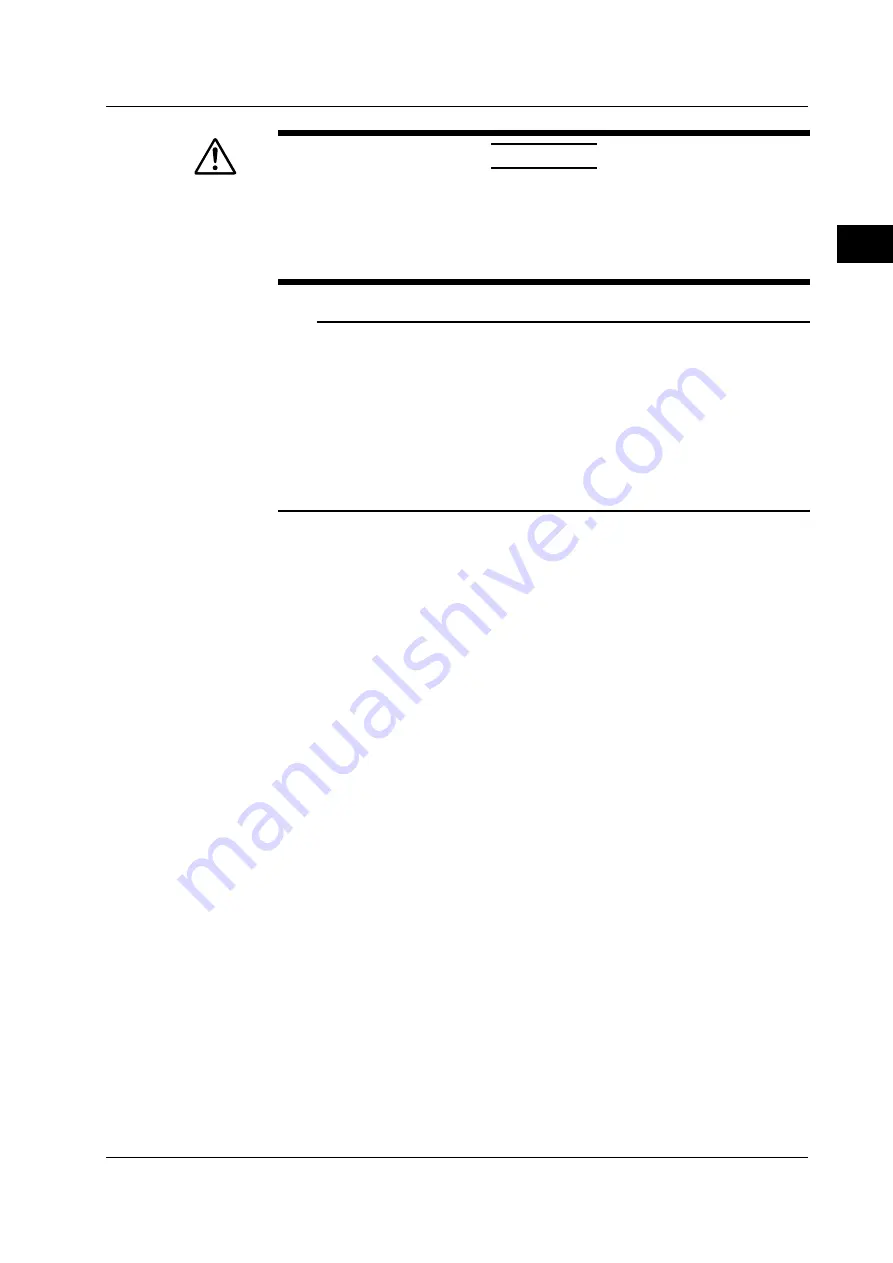
3-5
IM 253421-01E
Before Starting Measurements
3
CAUTION
Use lead wires that have sufficient margin in withstand voltage and current
against the signal being measured. The lead wires must also have insulation
resistance that is appropriate for the ratings.
Ex.
If measurement is carried out on a current of 20 A, use copper wires with a
conductor cross-sectional area of at least 4 mm
2
.
Note
•
When measuring high currents, or currents or voltages that contain high-frequency
components, wiring should be made with special attention paid to possible mutual
interference and noise problems.
•
Keep the lead wires short as possible.
•
For current circuits indicated by thick lines in the wiring diagrams shown in section 3.4 and
later, use thick lead wires appropriate for the current to be measured.
•
The lead wire to the voltage input terminal should be connected as close to the load of the
object under measurement as possible.
•
To minimize stray capacitance to ground, route both lead wires and grounding wires so that
they are as away from the instrument's case as possible.
3.3 Wiring Precautions
















































